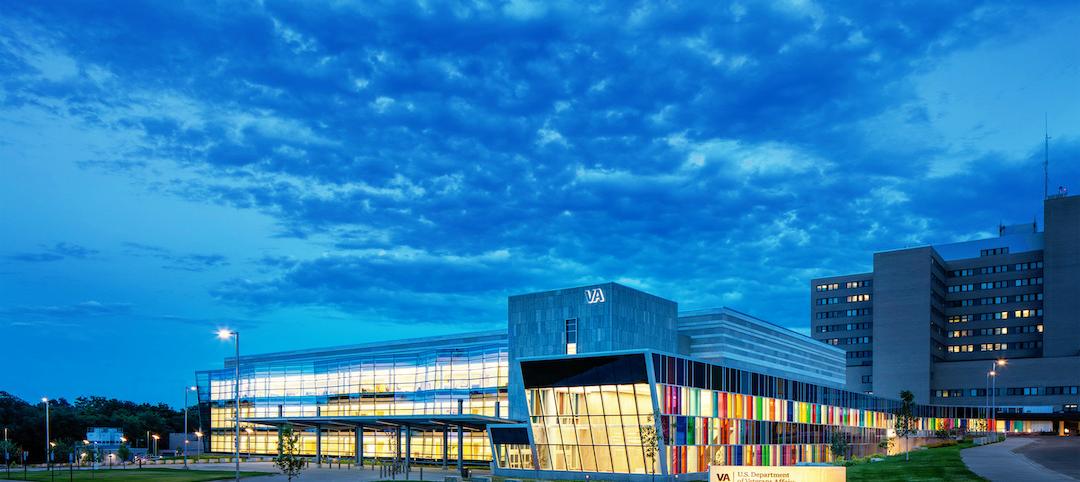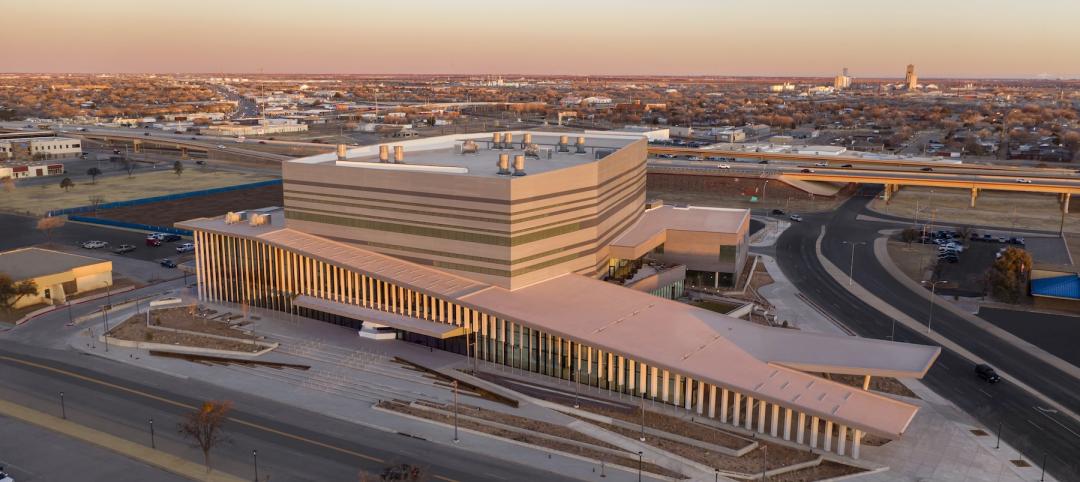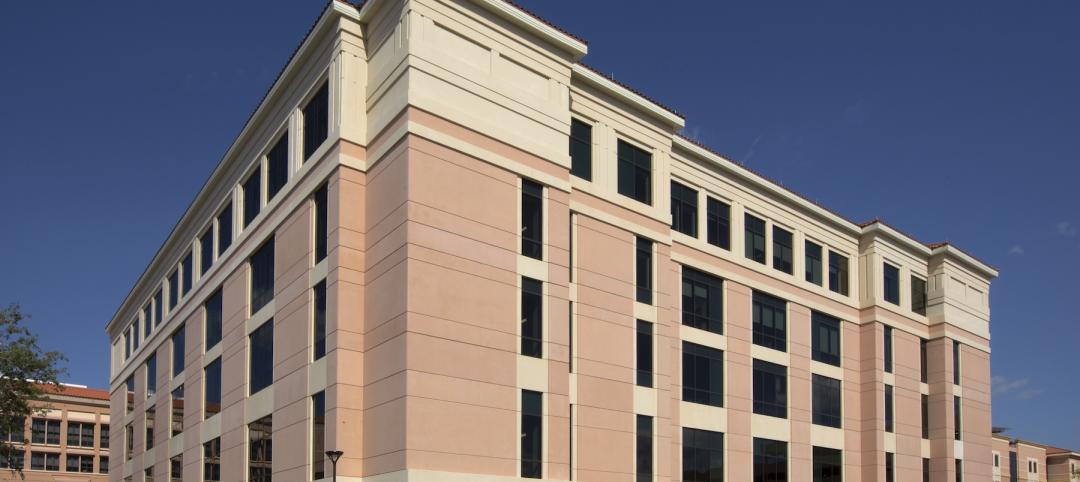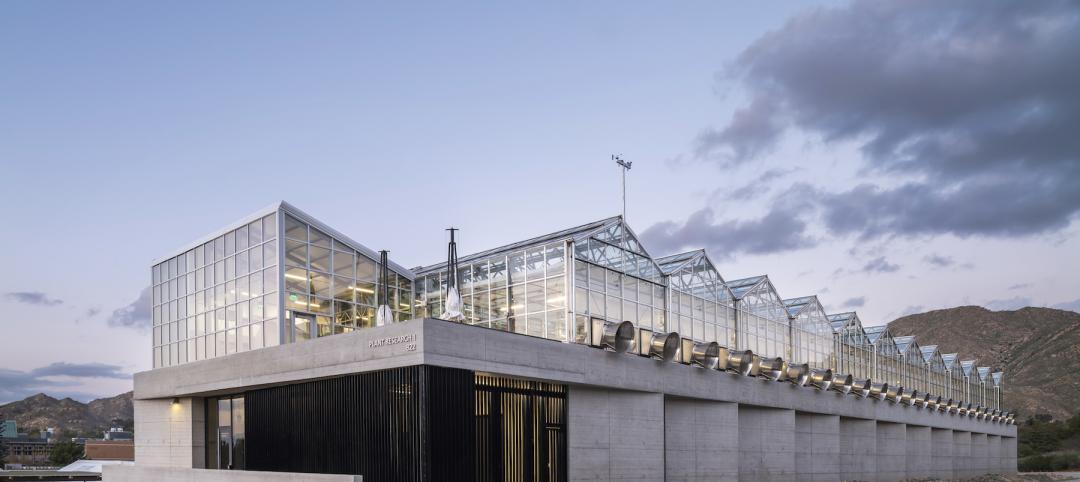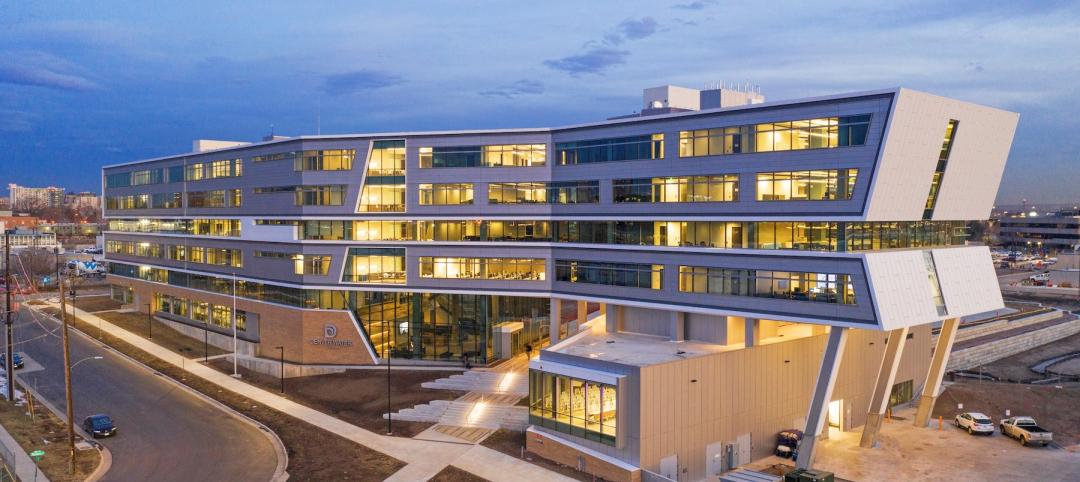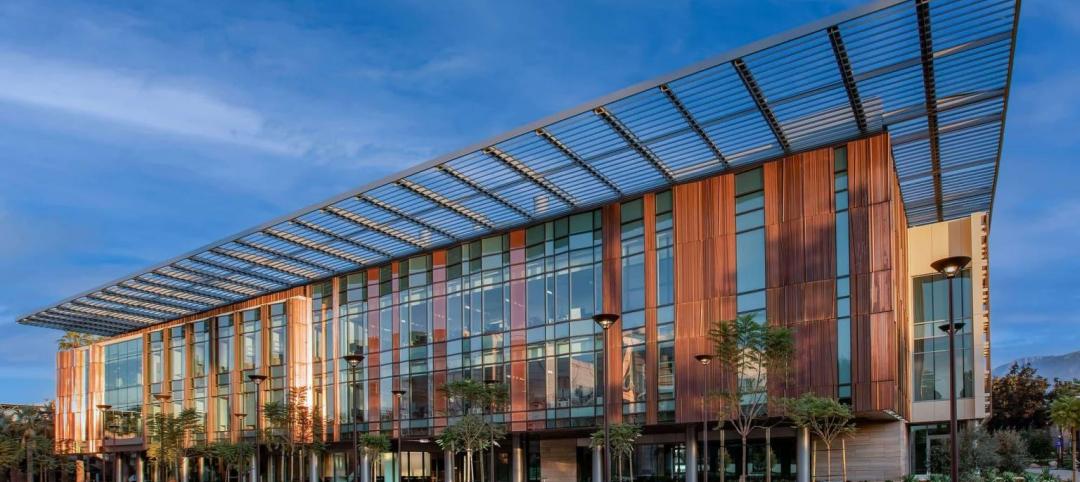Daily life as a researcher in the typical high-containment lab facility goes something like this: Arrive early in the morning at a nondescript building. Pass through security. Complete extensive containment procedures—shower-in, change clothes, etc. Finally, enter a dreary, largely windowless inner sanctum for eight to 10 hours of intense lab work. Any break from research activity—to grab lunch, attend a meeting, work on the computer—requires a trip out of containment, along with exit and re-entry procedures. On a busy day, researchers could repeat this cycle half a dozen times.
The Building Team for the Pirbright Institute’s new Category 4 biocontainment facility (roughly equivalent to BSL-3 Enhanced in the U.S.) thought there had to be a better way. With the goal of attracting and retaining the world’s top viral disease scientists to Pirbright’s campus in Surrey, England, the team, led by design architect and lab planner HDR, project/program manager AECOM, and design-builder Shepherd Group, set out to rewrite the rules of containment lab design. What the group ultimately delivered is unlike anything seen in an infectious diseases laboratory environment.
The 151,000-sf Plowright Building breaks free from the traditional box-inside-a-box containment lab approach by literally turning the building inside out. The lab spaces that normally would be located within the inner sanctum are located at the perimeter of the structure, where floor-to-ceiling windows flood the research spaces with natural light. At the center of the building are work and collaboration zones—offices, conference rooms, and a cafeteria—situated around a dramatic cylindrical, three-story, skylit glass atrium.
PROJECT SUMMARY
PLATINUM AWARDBBSRC National Virology Centre – The Plowright Building
The Pirbright Institute
Surrey, EnglandBUILDING TEAM
Submitting firm: HDR (architect, lab planner)
Owner: Pirbright Institute, Biotechnology and Biological Sciences Research Council
Project/program manager: AECOM
Structural, MEP engineer: AECOM Engineering
Cost consultant: Turner and Townsend
Commissioning consultant: Merrick & Co.
Design-builder: Shepherd GroupGENERAL INFORMATION
Size: 151,000 sf
Construction cost: $175 million U.S.
Construction time: July 2011 to October 2014
Delivery method: Design-build lump-sum price
To minimize the number of times researchers must transfer in and out of containment during a typical workday, the team located most of the building’s work and meeting spaces within the containment zones, including a portion of the main cafeteria. There, a 15-foot-high glass wall separates the containment dining area from the general eating area—a design feature that, for the first time, allows Pirbright to conduct all-staff meetings and symposiums without researchers having to leave containment.
To pull off this audacious scheme, the team worked hand in hand with the client to develop creative solutions to countless formidable problems. They include:
• Maintaining an airtight seal at the perimeter. Solution: a custom concrete containment barrier, meticulously sanded and coated with a seven-layer custom-designed containment system. Steel frames for the building’s 2,182 through-wall penetrations (windows, doors, services, etc.) were cast into the concrete walls to accept gaskets that are vital to maintaining an airtight seal at each penetration point.
• Applying a layered approach to containment that mirrors risk level. Solution: A negative air-pressure cascade moves from the lowest containment zones (RS0) to the most stringent zones (RS4) with once-through air that is exhausted through a HEPA air-filtration system in a penthouse floor above the labs. Sample and waste flow is one-directional. Samples come in at one end of a lab wing and waste goes out—through autoclaves—at the opposite end.
The close-knit Building Team implemented numerous teaming and quality best practices—including factory acceptance testing, mockup testing, team scoring, 360-degree feedback, and clean builder procedures—to ensure the project went off without a hitch. The results are proof of the team’s success. The building opened last October, a week earlier than scheduled and under budget. More to the point, the facility is meeting Pirbright’s stated goal of attracting top talent. Since opening, the institute has more than doubled its research staff, to 350.
“This project showcases a truly innovative design approach to a containment facility,” said Building Team Awards judge Nathaniel Snydacker, PE, LEED AP, Vice President with Environmental Systems Design. “The collaboration between design team, owner, and construction team was readily apparent in the unique vision for this facility, allowing color and sunlight into what would typically be a cavern.”
For more about the Plowright Building: www.BDCnetwork.com/Pirbright.
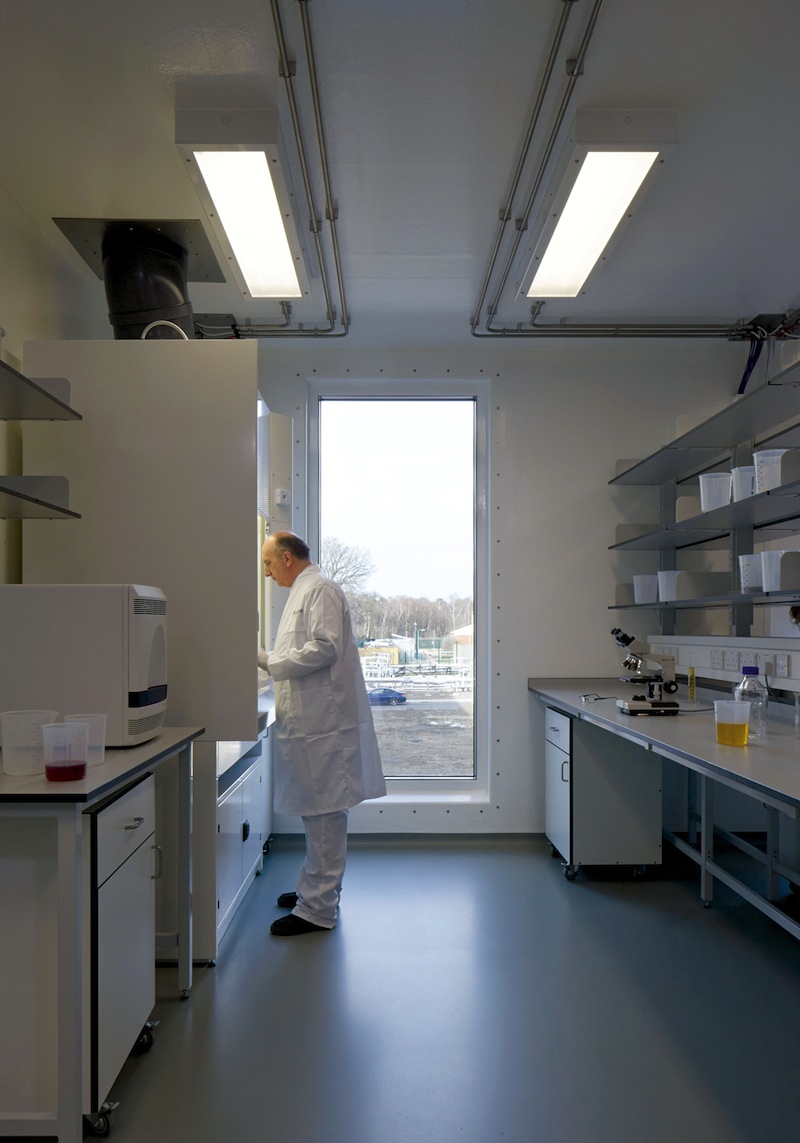 Floor-to-ceiling windows flood the labs with natural light and offer scenic views of the Pirbright Institute campus. To maintain an airtight seal at the through-wall penetrations (windows, doors, service ducts, etc.), the team developed a custom gasket system that can be easily serviced for the life of the building. Photo: © James Brittain
Floor-to-ceiling windows flood the labs with natural light and offer scenic views of the Pirbright Institute campus. To maintain an airtight seal at the through-wall penetrations (windows, doors, service ducts, etc.), the team developed a custom gasket system that can be easily serviced for the life of the building. Photo: © James Brittain
 The main collaboration spaces at Plowright—meeting rooms, workstations, and cafeteria—overlook a dramatic, three-story, glass-enfolded atrium at the heart of the facility. The building’s transparent curtain wall, skylit atrium, and abundant interior glass flood the indoor spaces with natural light and provide visual connectivity to the work being conducted inside the building. Photo: © James Brittain
The main collaboration spaces at Plowright—meeting rooms, workstations, and cafeteria—overlook a dramatic, three-story, glass-enfolded atrium at the heart of the facility. The building’s transparent curtain wall, skylit atrium, and abundant interior glass flood the indoor spaces with natural light and provide visual connectivity to the work being conducted inside the building. Photo: © James Brittain
Related Stories
| Aug 29, 2022
Montana becomes first U.S. state to approve 3D printing in construction
Montana is the first U.S. state to give broad regulatory approval for 3D printing in building construction.
Architects | Apr 22, 2022
Top 10 green building projects for 2022
The American Institute of Architects' Committee on the Environment (COTE) has announced its COTE Top Ten Awards for significant achievements in advancing climate action.
Concrete Technology | Apr 19, 2022
SGH’s Applied Science & Research Center achieves ISO 17025 accreditation for concrete testing procedures
Simpson Gumpertz & Heger’s (SGH) Applied Science & Research Center recently received ISO/IEC17025 accreditation from the American Association for Laboratory Accreditation (A2LA) for several concrete testing methods.
2021 Building Team Awards | Jan 14, 2022
First public-private partnership project in Veterans Administration history saves $34 million in costs
LEO A DALY and McCarthy Building Companies head the project team for the Omaha VA Ambulatory Care Center in BD+C’s 2021 Building Team Awards.
Building Team Awards | Dec 8, 2021
A performing arts center celebrates a legendary rocker and his birthplace
Buddy Holly Hall in Texas receives BD+C’s Silver Building Team Award.
Building Team Awards | Dec 7, 2021
A rapid response to a health emergency
Baptist Hospital of Miami’s 233-bed Hope Tower receives BD+C’s Bronze Building Team Award
Building Team Awards | Dec 3, 2021
Putting science on display, thanks to a design-build approach
UC Riverside’s Plant Growth Environments Facility receives BD+C’s Bronze Building Team Award.
Building Team Awards | Dec 2, 2021
An academic ‘precinct’ brings arts and sciences together
Wofford College’s Chandler Center for Environmental Studies receives BD+C’s Silver Building Team Award.
Building Team Awards | Dec 1, 2021
Denver sets the bar for water reclamation and reuse
A new administration building for the city’s water utility company scores Platinum in BD+C’s 2021 Building Team Awards.
2021 Building Team Awards | Nov 17, 2021
Caltech's new neuroscience building unites scientists, engineers to master the human brain
The Tianqiao and Chrissy Chen Institute for Neuroscience at the California Institute of Technology in Pasadena wins a Gold Award in BD+C's 2021 Building Team Awards.






